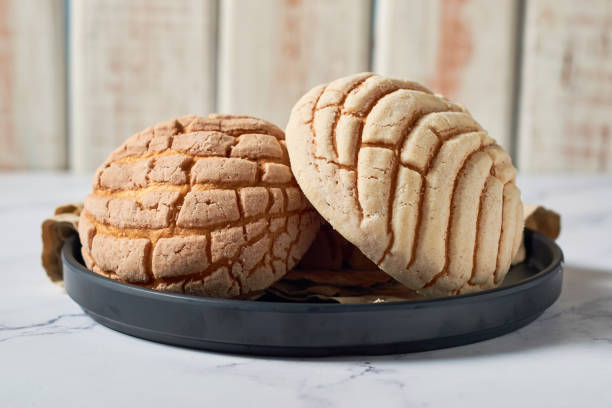Pan dulce, or sweet bread, is a type of bread that is popular in Latin American cultures. It is often made with flour, sugar, eggs, and butter, and it comes in a variety of shapes and sizes. Pan dulce is often eaten as a snack or for breakfast, and it can be found in bakeries and grocery stores throughout Latin America. The history of pan dulce is long and rich, dating back to the 16th century. The bread was first introduced to Latin America by the Spanish, and it quickly became a staple food in many cultures. Today, pan dulce is enjoyed by people all over the world, and it holds a special place in the hearts of those who grew up eating it. In this blog post, we will explore the history of pan dulce and how it is made. We will also look at how bread is shared in different cultures, and how it has become a symbol of Latin American heritage.
What is pan dulce?
A staple of Mexican bakeries, pan dulce are sweet loaves of bread that come in a variety of shapes and sizes. The most common varieties include conchas, which are shell-shaped; carnitas, which are crescent-shaped; and areas, which are pear-shaped.

Pan dulce is typically eaten for breakfast or as a snack. It can be served plain or with coffee or hot chocolate.
In Mexico, pan dulce is often shared between friends and family. It is not unusual for someone to buy a few different kinds of pan dulce and take them to work or school to share with others.
The History of Pan Dulce
Though its exact origins are uncertain, it is thought that pan dulce, or sweet bread, has been around since the early 1800s. The first recorded recipe for the treat was in 1820, though it is likely that it was being made long before that.
The bread gained popularity in the 1800s and early 1900s as bakeries began popping up all over Mexico and Latin America. It quickly became a staple in many cultures and is now enjoyed by people all over the world.
There are many different types of pan dulce, each with its own unique flavor and history. Some of the most popular include conchas, which are shaped like seashells; carnitas, which are crescent-shaped; areas, which are ear-shaped; empanadas, which are turnovers; and churros, which are fried doughnut-like pastry.
No matter what shape or form they come in, pan dulce is always a delicious treat!
What are the types of pan dulce?
Pan dulce, or Mexican sweet bread, is a type of pastry that is popular in Mexico and other parts of Latin America.
There are many different types of pan dulce, each with its own unique flavor and shape.
- Conchas: Conchas is one of the most popular types of pan dulce. They are round pastries with a spiral shell-like design on top. They come in many different colors, including pink, yellow, white, and brown.
- Borrachitos: Borrachitos are small, round pastries filled with jelly or cream. They are often dipped in chocolate or covered in sprinkles.
- Empanadas: Empanadas are crescent-shaped pastries that can be filled with a variety of fillings, such as cheese, fruit, or meat.
- Elotes: Elotes are corn-shaped pastries that are often filled with cream cheese or chocolate.
- Orejas: Orejas are ear-shaped pastries that are often dusted with powdered sugar.
There are many other types of pan dulce available, so there is sure to be one to suit every taste!
How is pan dulce made?
Pan dulce is made by combining flour, sugar, salt, shortening, eggs, and baking powder to form a dough. This dough is then divided into small balls and flattened into disk shapes. The disks are then fried in oil until they are golden brown. Once the pan dulce is fried, they are dipped in sugar syrup and allowed to cool.
How is pan dulce shared?
When it comes to sharing pan dulce, there are a few different ways that people do it. The most common way is to simply pass around a plate or tray of sweets and let people take what they want. Another popular method is to put a few pieces on each person’s plate before meals as a dessert or after-meal treat.
In some cases, pan dulce is even used as currency. This is especially common in Mexico, where sweets are often exchanged for goods or services. For example, someone might give a baker a few pieces of pan dulce in exchange for making their wedding cake.
Of course, how to pan dulce is shared also depends on the occasion. On special occasions like Christmas and the Day of the Dead, it’s not uncommon for people to give each other elaborate boxes or platters of pan dulce as gifts. And at weddings and other celebrations, it’s not uncommon to see a big stack of these sweets on the dessert table.
Conclusion
What started out as a small, humble pastry has become a treasured part of Mexican culture. Pan dulce is enjoyed by people of all ages and religions, and it plays an important role in many social gatherings. Whether you’re enjoying a concha with your morning coffee or sharing some pan de Muerto with friends and family during the Day of the Dead, these sweetbreads are sure to bring a smile to your face. So next time you’re in Mexico, be sure to try some pan dulce for yourself!

Francis Burns is an avid writer from Louisiana. With a Bachelor’s in English and a background in journalism, Francis has been writing for a variety of media outlets for the last five years. He specializes in stories about the local culture and loves to fill his work with inspiring words. When not writing, Francis enjoys exploring the outdoors of Louisiana and photographing nature.




